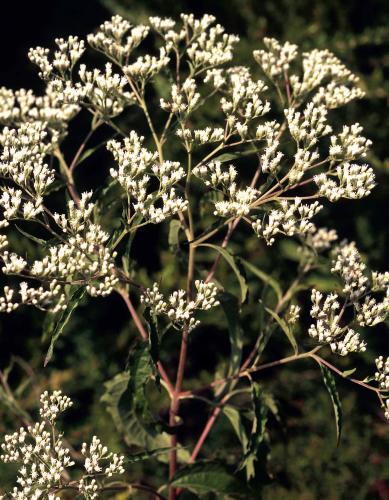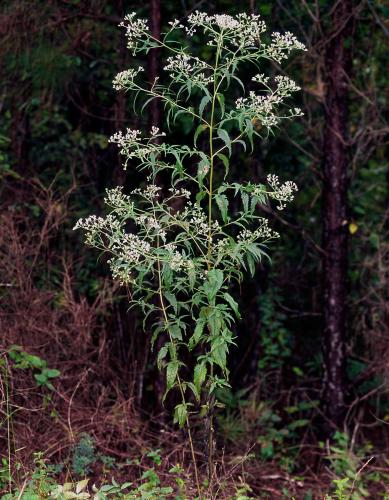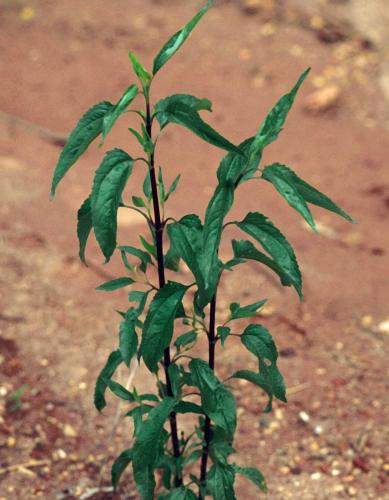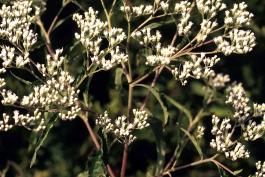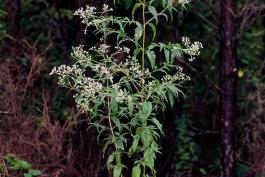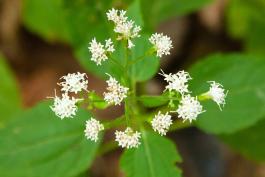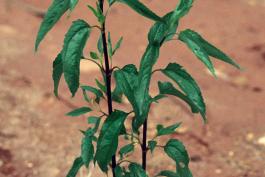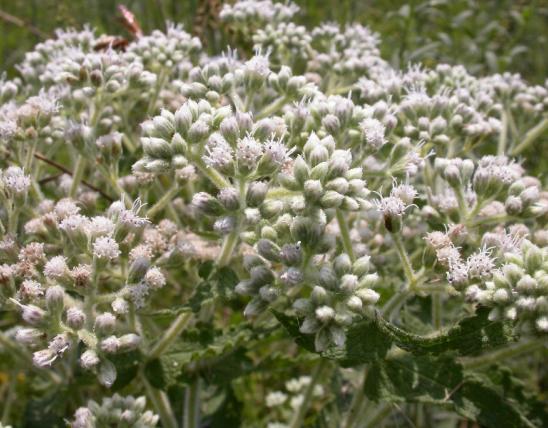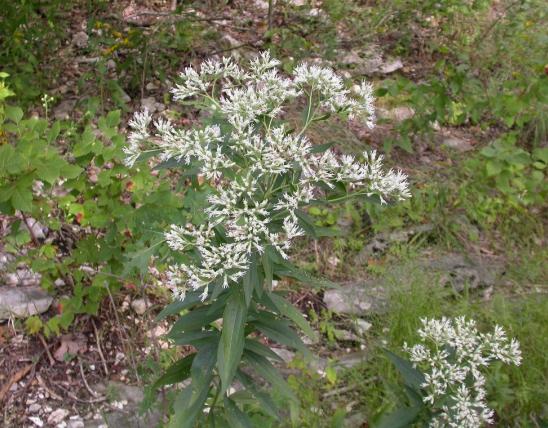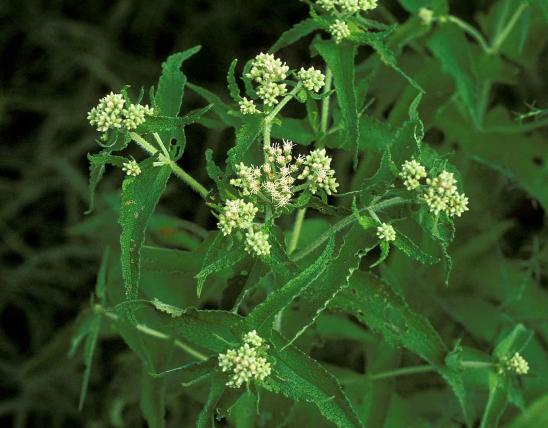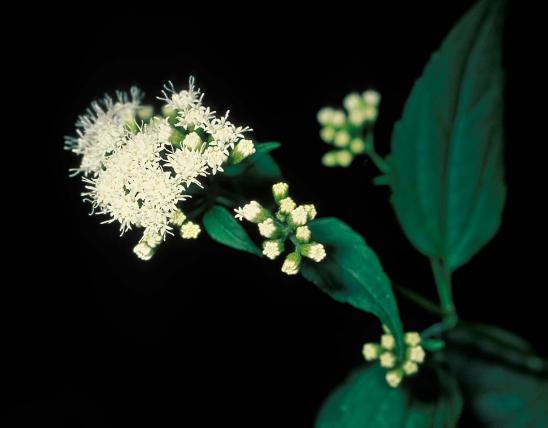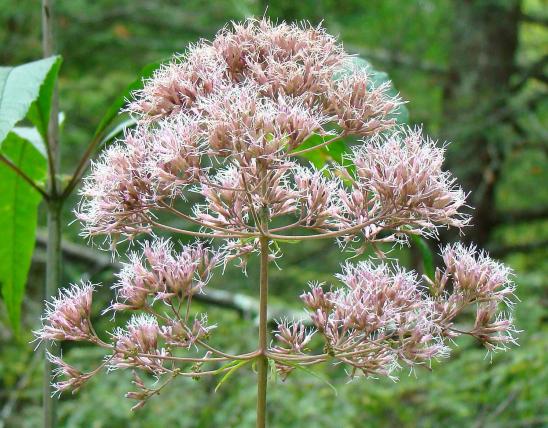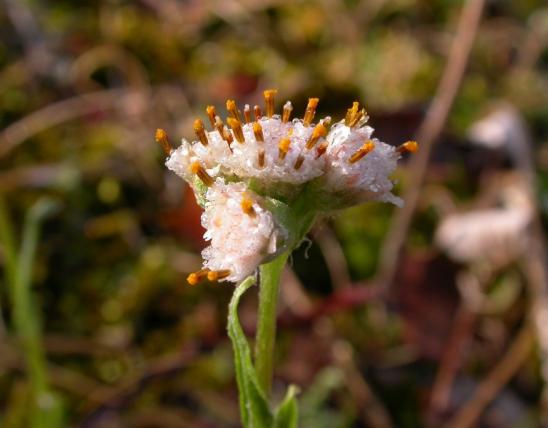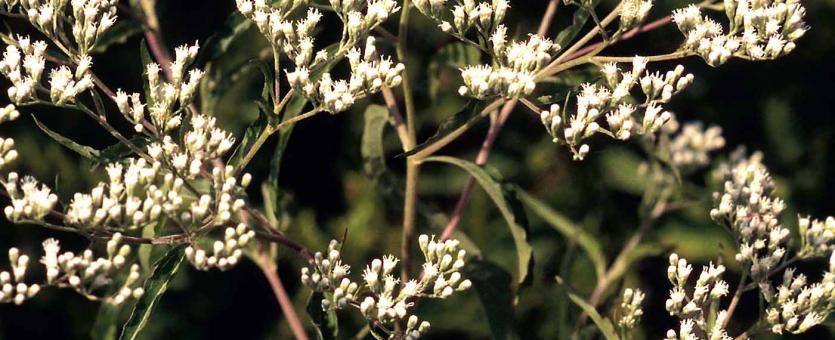
Late boneset, or late-flowering thoroughwort, is a stout native perennial whose stems and leaves usually have short hairs. The leaves are lance shaped or ovate, often angled at the base, with definite leaf stalks, tapered to a sharply pointed tip, with sharp, often coarse teeth along the margins. Leaves have 3 main veins (sometimes 5), with the ones on the sides branching from the middle vein at the base of the leaf blade. Flowerheads contain 9–15 florets. Blooms August–October.
Similar species: Nine species of Eupatorium have been recorded in Missouri. Leaf characteristics are usually the best way to distinguish among the species. Of the other species, tall thoroughwort (E. altissimum) is most similar to late boneset. It has narrower and hairier leaves; they are slender lance-shaped and taper nearly to the plant stalk, with short hairs and dotted with glands, with less coarse teeth that occur only above the middle of the leaves. Also, tall thoroughwort’s flowerheads only contain 5 florets (as opposed to 9–15). Note that late boneset can be just as tall as tall thoroughwort.
Learn more about Missouri’s thoroughworts, or bonesets, on their group page.
Scattered statewide.
